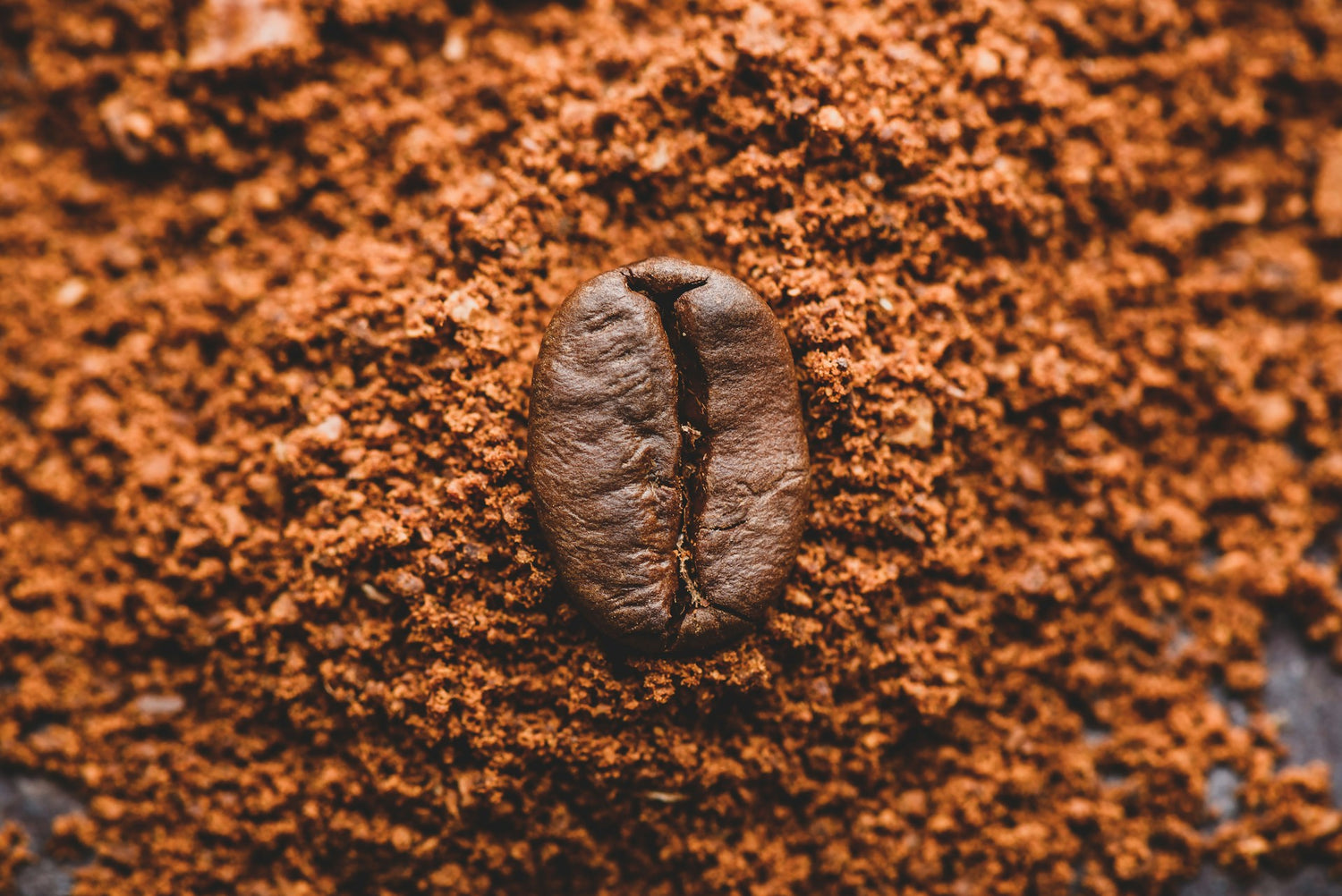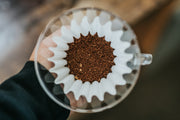Mastering the Perfect Grind: Pro-Tips for Dialing In Your Coffee

What is "Dialing In" Coffee?
"Dialing in" refers to fine-tuning your grinder to achieve the optimal grind size for a specific coffee and brewing method. This process can be likened to adjusting the focus on a camera lens until the image is crystal clear. Because coffee beans vary in size, density, and moisture content, there's no universal setting that works for all coffees. Finding the right grind ensures that your coffee is balanced and flavorful, without the bitterness of over-extraction or the sourness of under-extraction. Each coffee bean is unique. From its growth environment to its processing method, every factor influences the bean's characteristics. Thus, dialing in your grinder is about understanding and respecting these nuances to extract the best flavors.Starting with Pour Over
For this guide, we want to focus on the Pour Over method—a precise and popular technique notably in Japan. Pour Over / Hand Drip is particularly suitable for this exercise because it allows for precise control over variables such as water temperature, pour rate, and timing. This control makes it easier to detect how changes in grind size affect the taste of the coffee. By starting with this method, you set a strong foundation that can be adapted to other brewing methods later on. Our team has undergone extensive training to perfect this method, learning to taste and adjust the grind size meticulously. In fact, we were trained by Brewer's Cup Champion of Vietnam, Bella Pham -- so we want to share this experience with you to get the most out of your coffee.
Expert Tips for Dialing In Your Grind
-
Adjust One Variable at a Time
-
When experimenting with grind size, keep other variables—such as water temperature (ideally between 195°F and 205°F), coffee dose, and brewing technique—constant. This way, you can isolate the impact of the grind size on your coffee.
-
Changing too many variables at once can make it difficult to pinpoint what affects the final cup. By controlling factors like water temperature and coffee dose, you ensure that any differences in taste are due to grind size alone. This scientific approach allows for a clearer understanding of how each grind setting influences the extraction process.
-
-
Begin with Your Previous Setting
-
If you’re unsure where to start, use the grind setting from your last brew as a baseline. For a new grinder, start in the middle of the range. Note that new grinders might require a few extra trials to achieve the desired grind due to their sharp blades.
-
Using the previous setting helps create a point of reference. Over time, as you brew more cups, you’ll build a mental database of grind settings that work well with different beans and methods. This cumulative knowledge will make dialing in faster and more intuitive.
-
-
Make Small Adjustments
-
After brewing your first cup at the baseline setting, prepare two more cups: one with a slightly finer grind and one with a slightly coarser grind. Small adjustments, such as moving the grinder setting by one or two steps, can make a significant difference. For example, if your baseline is set at 20, try 19 and 21 for comparison.
-
Small adjustments are crucial because the relationship between grind size and extraction is highly sensitive. Even minor changes can dramatically alter the flavor profile. By making incremental adjustments, you can fine-tune the grind to achieve the perfect balance.
-
-
Consider Your Taste Preferences
-
Your taste preferences play a crucial role in dialing in the grind. If you prefer darker roasts or bitter foods, you may have a higher tolerance for bitterness, making over-extraction less noticeable. Conversely, if you enjoy lighter roasts or tangy foods, you might be more sensitive to acidity and under-extraction.
-
Understanding your taste preferences helps you identify what to look for in a well-extracted cup. Personal preferences guide the adjustments you make, ensuring the final product aligns with what you enjoy most. This personalization makes the coffee brewing process both scientific and artistic.
-
-
Taste and Evaluate Your Coffee
-
Conduct a side-by-side tasting of your coffee samples. Pay attention to where the flavors hit your palate. Ideally, the coffee should be sweet and balanced. If it tastes sour and puckers the sides of your mouth, it’s under-extracted, meaning the grind is too coarse. If it tastes bitter and lingers unpleasantly, it’s over-extracted, indicating the grind is too fine.
-
Tasting is the most critical step in the dialing-in process. Take your time with each cup, noting the differences in flavor, body, and aftertaste. This mindful approach not only improves your brewing skills but also enhances your appreciation for the complexities of coffee.
-
-
Understand Blends vs. Single Origins
-
Blends and single-origin coffees express flavors differently. An under-extracted blend may taste flat or even sour, while an over-extracted blend can give you an unpleasant dry-ness in your throat. Meanwhile it may be that under-extracted single origins can taste empty and even tart on the sides of your mouth, whereas over-extracted ones may resemble overly bitter foods.
-
Knowing how different types of coffee respond to extraction helps you adjust your grind settings more effectively. Blends often aim for balance and consistency, while single origins highlight unique characteristics. Tailoring your approach to each type ensures you bring out the best in every bean.
-
-
Experiment with Multiple Batches
-
If your initial tests are close but not perfect, don’t hesitate to brew additional batches. Use the best-tasting sample as your new baseline and make further adjustments. Persistence and patience will bring you closer to the ideal grind.
-
Brewing multiple batches might seem tedious, but each iteration brings you closer to understanding how grind size affects flavor. This iterative process is essential for refining your technique and achieving consistency. Over time, you’ll develop a keen sense for what adjustments are needed to perfect each brew.
-
-
Leverage Barista Expertise
-
When buying whole beans, ask the barista (or us) to grind a small sample at the suggested grind size for your brewing method. Each coffee we offer can be grinded by our team for your specific brew method.
-
But even if you don't buy from us, baristas in most shops are trained to optimize grind settings for different brewing methods. Their expertise can provide valuable insights and save you time in your dialing-in process. Don’t hesitate to ask for recommendations and visual aids, as these can significantly enhance your understanding.
-
-
Be Patient; You're Learning a New Skill
-
Mastering the grind takes time and practice. Baristas dial in their grinders daily to ensure the highest quality coffee. While you don’t need to go to such lengths at home, investing time in this process will enhance your coffee experience. Enjoy the journey and the satisfaction that comes with perfecting your grind.
-
Patience is key in developing any new skill, and coffee brewing is no exception. Embrace the learning curve and celebrate small victories along the way. Each step you take improves your technique and deepens your appreciation for the art and science of coffee.
-
Practice. Practice. Practice.
Dialing in your coffee grind is a skill that requires practice and patience. By following these expert tips and being open to experimentation, you’ll develop a deeper understanding of the brewing process and enjoy a more refined coffee experience. Each step brings you closer to brewing the perfect cup of coffee at home. Embrace the learning curve, and savor the delicious results.
Ready to get started? Check out our range of signature blends and highly rated Single Origins and order as whole beans to try yourself!
Previous article

Next article

Related Topics
-

Why Your Pour Over Coffee Tastes Bitter, Sour, or Weak (and 5 Fixes That Actually Work)
No more guessing! Pour over coffee shouldn’t taste bitter one day and watery the next—but small brewing changes can swing your cup fast. In this guide, learn why pour over coffee tastes bitter, sour, or weak, how to tell if you’re over-extracting or under-extracting, and the 5 fixes that actually work (grind size, coffee-to-water ratio, water temperature, pouring technique, and brew time).
-

Are Coffee Flavor Notes Real? How to Read Tasting Notes (and Pick Beans You’ll Actually Love)
Wondering “Are coffee tasting notes real, or are flavors added?” This guide explains what specialty coffee tasting notes actually mean, how natural flavors like floral, fruity, chocolate, and caramel develop from origin and processing, and how to choose coffee beans you’ll love based on the label. You’ll also learn why your brew can taste different than the bag and simple tips to bring out a clean, sweet, and aromatic cup at home.
-

Anaerobic Coffee, Explained: From Fermentation Tank to Your Cup
Anaerobic coffee's real story happens inside the fermentation tank, where producers guide aroma, sweetness, and texture in a sealed, low-oxygen environment. In this guide, we break down what anaerobic really means, why it tastes so surprising, and how to brew it so it stays clean, balanced, and intentional.



